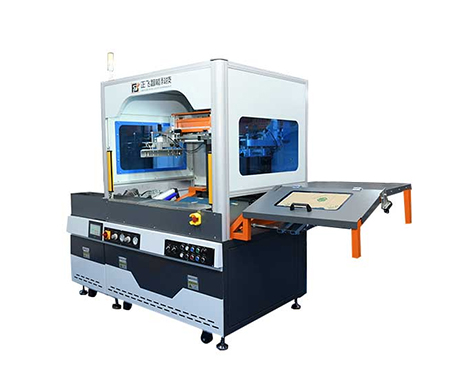The mechanical transmission system is the basis for the operation of the automatic screen printing machine. The motor, as the power source, provides the energy required for the operation of the entire equipment. Different types of motors are suitable for different working conditions. Ac motors have a simple structure and are easy to maintain, and are often used to drive components that require relatively stable speed. The servo motor, with its excellent control performance, plays a key role in the links that require positioning and speed regulation. The power generated by the motor is transmitted to various moving mechanisms through transmission components such as belts, chains or gears. For example, belt drive can achieve smooth power transmission and is often used to drive the horizontal movement of the workbench. Gear transmission can ensure high transmission accuracy and is more common in the printing head moving mechanism where high positional accuracy is required. These transmission components work in coordination with each other to enable the various parts of the automatic screen printing machine to move along the predetermined trajectory and speed.
The printing head is the core component for the automatic screen printing machine to achieve the printing function. The printing head is mainly composed of a scraper and a screen plate. The squeegee plays a role in squeezing the ink during the printing process. When the printing head moves, the squeegee exerts a certain pressure on the ink on the screen, allowing the ink to pass through the graphic parts of the screen and transfer to the surface of the substrate. The material, shape and pressure adjustment of the scraper have a significant impact on the printing effect. Scrapers of different materials are suitable for different types of inks. For instance, rubber scrapers are often used for ordinary inks, while polyurethane scrapers are more appropriate for scraping fine patterns or special inks. The screen plate, as the carrier for ink transfer, its production quality determines the clarity and precision of the printed pattern. The screen plate, through the photosensitive plate-making process, retains the mesh holes in the designed image and text areas while blocking the mesh holes in the non-image and text areas. Under the action of the squeegee, the ink can only leak through the mesh holes in the image and text areas, thus forming the desired pattern on the substrate.

The control system is like the "brain" of the automatic screen printing machine, responsible for commanding and coordinating the operation of each component. The programmable logic controller (PLC) is a commonly used control core. Operators program it through programming software to set parameters such as printing speed, printing frequency, and scraper pressure. According to the preset program, the PLC sends control signals to the motor, cylinder and other actuating elements to achieve the automatic control of the printing process. The human-machine interface (HMI) provides a window for operators to interact with the control system. Staff can view the equipment's operating status, modify parameters, monitor the printing process, etc. through the touch screen, facilitating the operation and management of the automatic screen printing machine. In addition, the control system is also equipped with sensors to detect the operating parameters of the equipment, such as the position of the worktable and the pressure of the printing head, and feed back the data to the PLC, enabling the system to adjust the control instructions in a timely manner according to the actual situation and ensuring the stable progress of the printing process.
The workbench is used to carry the substrate, and its flatness and stability directly affect the printing quality. The surface of the workbench is usually specially treated to increase the friction between it and the substrate and prevent the substrate from moving during the printing process. The worktables of some automatic screen printing machines also have functions such as lifting and rotating, facilitating the printing of substrates of different sizes and shapes. For instance, when printing curved objects, the worktable can be rotated to ensure that all parts of the substrate can make accurate contact with the screen, thus completing the printing process.